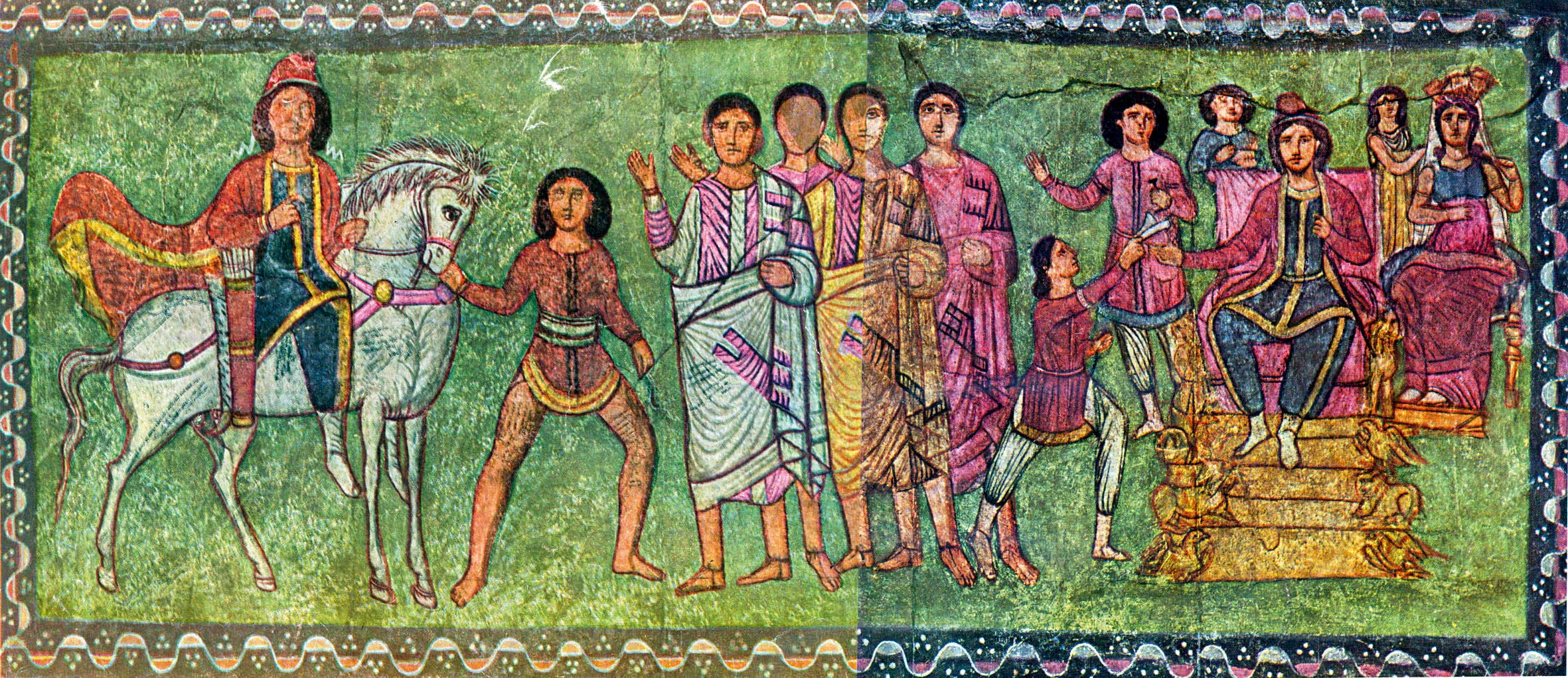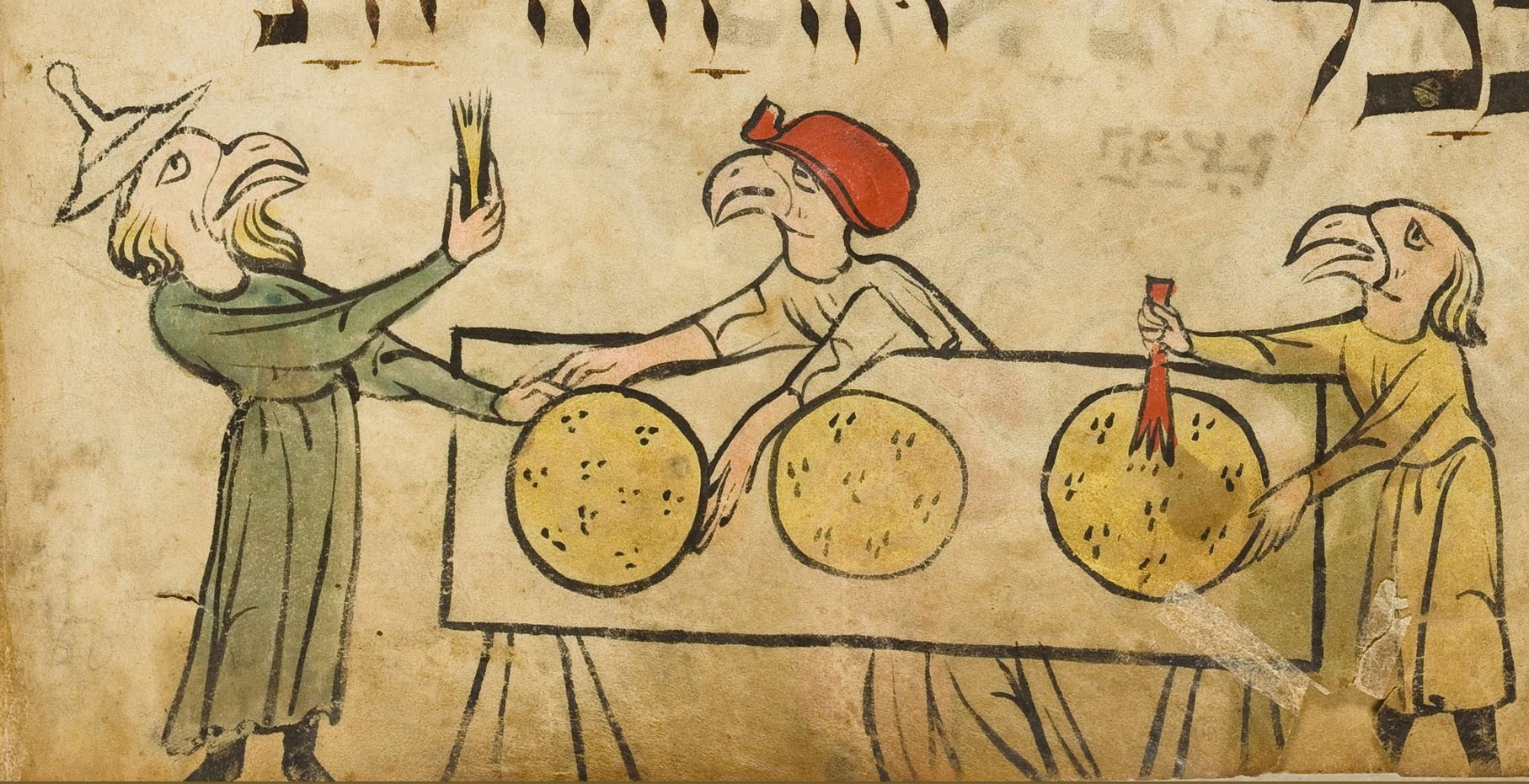As we approach Purim and the reading of the book of Esther, it strikes me that the story in it is very much one about the limits of different kinds of authority: that of the Persian king who drunkenly requests that his wife appear in front of his equally drunken courtiers, that of his queen who rebuffs his request and thereby kicks off the story, that of the Persian vizier Haman who demands that everyone bow to him, and indeed that of Mordecai who defies Haman and does not bow but is in turn defied by his own cousin Esther, who not only displays greater sensitivity to Gentile sensibilities, but is the sole person in the story to draw on a religious precedent. At the heart of these conflicts is the tension between the social order—which entails hierarchy, authority, deference, and acquiescence—and standing up for what is right; that is, for defending the truth even when those in positions of authority are wrong. These tensions are inescapable because those who have the most authority are not necessarily the wisest, and sometimes even the wise aren’t always right.
Esther convinces her husband, King Ahasuerus, to override Haman’s scheme to exterminate the Jews without posing a direct challenge to the king’s authority, and without violating the complex rules of the courtly conduct.
To shed some light on this aspect of the book, I think it’s instructive to examine a group of interconnected stories from the Talmud that show how the ancient sages addressed the same questions about the tradeoff between social order and the truth. The Talmud gives us two contrasting archetypes of how to reckon with this tradeoff: Rabbi Yehoshua ben Ḥananiah, the man who famously bested God in an argument, and Rabbi Meir, one of the most important figures in the development of Jewish law (halakhah). As we shall see, these stories also have much to say about the more specific problem, also encountered by Esther, of what happens when women must challenge male authority.
Let’s begin with a series of tales in Eruvin, recently covered in the daf-yomi cycle of daily Talmud study, that Rabbi Yehoshua tells about himself:
Rabbi Yehoshua ben Ḥananiah said: All my life nobody got the better of me, except for a woman, a little boy, and a little girl. A woman how? One time I was a guest at an inn. [The landlady] made me beans. The first day I ate them, I didn’t leave a thing on my plate. The second day I ate them, I didn’t leave a thing on my plate.
The third day she blasted them with salt. Once I tasted them, I didn’t have any more.
She said, “Rabbi, why don’t you eat?” I told her, “I already ate today.” . . .
She said, “Rabbi, are you trying to make up for the fact you didn’t leave anything on your plate the first two days? But didn’t the sages say: ‘You don’t leave a bit in the pot but you do leave a bit in the plate?’”
Here the landlady draws Yehoshua’s attention to the fact that he had been too greedy to observe the rabbinic nicety to leave a little food on your plate. Rather than rebuke him directly for ignoring this fine point of talmudic table manners, she simply over-salts his beans. She then confronts him, but frames her criticism as an acknowledgment of his authority, putting it to him as a question and calling him “rabbi.” Rabbis in the Talmud rarely ever address one another as rabbi. By using his title, she is on the one hand acknowledging and accepting the social order and their relative places within it, but on the other subtly mocking him by asking, since he is indeed a rabbi, why it is that she knows rabbinic etiquette better than he? Something similar happens in the next anecdote:
A little girl, how? One time I was walking down the road and the way went through a field, and I was walking on it. A little girl said to me: “Rabbi, isn’t this a field?” I told her: “No, it’s a beaten path.”
She told me: “Robbers like you have beaten it.”
Again, the female takes care to frame her challenge of male—not to say rabbinic—authority deferentially, addressing him as rabbi and first posing a question rather than an assertion. When Yehoshua denies an act of trespass by claiming he was just following a path created by others, she rebuts him with an observation of the simple fact that he is just the latest in a long line of trespassers who have trampled on her crops. Round two to the female of the species. But the third tale, without a female antagonist, is what draws an important connection to other rabbinic stories:
A little boy, how? One time I was walking along the road and saw a little boy sitting at the crossroads. And I said to him: “What way do we get to town?” He told me, “This way’s a long shortcut, and that way’s the long way that’s short.”
And I took the long shortcut, but when I got to the town I found it was surrounded by gardens and orchards, [and couldn’t go through]. I turned back the way I came until I once again saw the boy.
I said to him: “My son, did you not tell me [that this way is] short?”
He said to me, “But didn’t I tell you [that it is] long?!”
I kissed him on his brow and told him, “Lucky are you Israel, that you are all great sages, from the greatest to the smallest.”
On the face of it this is a classic simpleton-bests-the-scholar story, but Rabbi Yehoshua’s kiss on the brow at the end of it invokes another confrontation in which Yehoshua finds himself not as the authority who must be challenged, but as the one who must challenge authority. And this problem isn’t just about men and women; it’s also about rabbis and laypeople, adults and children, and, as we shall see, the relations among rabbis. For the questions the next story raises about authority are crucial to understanding rabbinic decision making, as well as the moral challenges that present themselves in all areas of human affairs.
In this tale (found in Rosh Hashanah 25a), Yehoshua comes into conflict with Rabban Gamliel, who is the nasi—essentially the top rabbi—and the scion of a great rabbinic dynasty. The two dispute the correct date of Yom Kippur, and Gamliel demands that Yehoshua come to him on the day that the holiday falls according to Yehoshua’s own calculation, bearing his staff and his purse. (On Yom Kippur carrying an object out of doors and handling money are strictly forbidden.) When Yehoshua gives way and does so, Gamliel kisses him on his brow and salutes him as both his master and his student—his master in learning, but his student because he accepted his ruling. When Rabbi Yehoshua kisses the little boy’s brow he is affirming the same social order; that is, he acknowledges that he is wise but accepts that in certain situations someone who knows less can grasp something essential, and the greater must defer to the lesser.
Following directly on the heels of these tales of Yehoshua are a cluster of stories about Bruriah, the wife of Rabbi Meir and a woman who, like Esther, finds herself challenging male authority. Bruriah has a sharp tongue, a sharper intellect, extensive knowledge of Torah, and a willingness to let male scholars know when they’re in the wrong. In a typical episode, she comes across a student studying in a whisper, kicks him, and then presents exegetical proof that he should study out loud, telling him “If you draw [from the waters of Torah] with every one of your limbs, your learning will be preserved, but if not—it will not be preserved.’
In Tractate Avodah Zarah there is another discussion of Bruriah, that alludes to, without describing, “the Bruriah incident.” The 11th-century commentary of Rashi fills in the blanks:
At one time, she mocked the Sages’ saying (Kiddushin 80b), “The thought of women is weak about them.” [This phrase seems to mean not that women have limited intellectual capacity, but that are easily swayed.] And [her husband Rabbi Meir] told her, “By your life, your end will be to concede their words.” And he commanded one of his students to tempt her to a transgression. And he pleaded with her many days until she agreed. And when it became known about her, she hung herself. And Rabbi Meir fled because of the shame.
Setting aside questions about the authenticity of this extrapolation, which first appears in writing centuries after the completion of the Babylonian Talmud, and nearly a millennium after the events themselves would have taken place, it nevertheless strikes me as consistent with the character of Rabbi Meir, whose attitudes toward challenges to authority—whether his is being challenged or whether he is challenging others—deviate from talmudic norms.
Rabbi Yehoshua famously bested both his colleague Rabbi Eliezer and his superior Rabban Gamliel, but deferred to Gamliel as he did to the woman, little girl, and little boy. By contrast, Rabbi Meir’s final place in rabbinic tradition is defined by his being incredibly wise but essentially unable to convince his colleagues, and liable to resort to subterfuge when his own dignity is threatened, or to put it more charitably, when he feels the dignity of learning is threatened.
Tractate Horayot tells how Rabbi Meir, jealous of his own honor, cooked up a scheme to embarrass Gamliel’s son, and successor as nasi, Rabban Shimon in order to oust him from his office. While the story confirms that Meir was indeed the more learned sage, his plot is foiled by another rabbi who cares for Rabbi Shimon’s dignity more than his own status, and Shimon expels Meir from the academy. Nonetheless, Rabbi Judah the Nasi, son and successor of Shimon, relied heavily on Meir when compiling the Mishnah, the earliest stratum of the Talmud. But although the Mishnah quotes Meir perhaps more than any other sage, it generally does so anonymously, to punish him for his hubris. So Rabbi Meir is the very substance of the halakhic tradition, but not named in it.
The contrast to Yehoshua could not be starker. Yehoshua defers to his social inferiors when they are right and he is wrong, and to his social superior Gamliel even though he is wrong and Yehoshua is correct. But Meir won’t defer either to his wife or to his superior Rabbi Shimon. He doesn’t even try to engage Bruriah’s argument. In both cases, he resorts to underhand machinations to prove his point. For both, he’s punished.
What does this have to do with Esther? The first mention of Esther’s response to Mordecai’s authority is when she follows his instruction to keep quiet about her faith when she enters the king’s palace:
Esther did not declare her race or birth
for Mordecai commanded her not to declare it.
Of course, Esther’s deference makes sense. Mordecai is the older relative who raised her after her parents’ deaths; also we can safely assume that in ancient Persia she was expected to defer to him as a male relative. Later, when Haman has secured a royal edict to exterminate the Jews, Mordecai reverses himself and stands outside the palace in mourning clothes. He then sends this message to Queen Esther through her servant:
Do not imagine you’ll get out alive,
there in the king’s house, alone of all the Jews.
For if you keep silent and still at this time,
relief and rescue will stand by the Jews from somewhere else,
but you and your father’s house will be lost.
And who knows if not for such a chance
you reached the royal seat.
This is frequently taken as the moral crux of the book, and it is, but for our purposes let us look at what Esther’s responses are to Mordecai’s authoritative demands. First, before she even gets this message, Esther is scandalized by Mordecai’s appearance outside the palace in sackcloth and ashes, and sends her ladies in waiting with appropriate attire for him to change into, which he refuses. At first glance this might be taken as evidence of Esther’s shallowness—she’s assumed the values of palace life and its obsessions with beauty—but it’s actually an acknowledgment of where they are and the danger they are in. If it was reckless for her to mention her heritage, as Mordecai himself said, it is dangerous to stand out in this highly conformist environment. Esther heeds the surrounding social mores, much as the landlady reminded Rabbi Yehoshua of the rabbinic codes of table manners which he had ignored when it suited him.
Then we come to the decisive plot turn and religious nub of the story, which does not come from Mordecai at all. When he asks her to speak with her husband the king, Esther explains to Mordecai—unschooled as he is in the taboos of the royal court—that if she goes to see the king without first being called, she would be executed. Again, he is oblivious to his surroundings. When Mordecai insists, Esther’s response is the single religious gesture described explicitly in the book:
Go gather all the Jews in Shushan and fast for my sake,
And do not eat and do not drink, three days, night and day,
And I too with my maids will fast so
And thus I’ll come to the king not according to the norm.
And if I’m lost, I’m lost.
This is the only point in the text where anyone suggests a religious response to events, or any acknowledgment of an authority that is more than temporal. The word I have translated as “norm” is dat—which, in modern Hebrew means “religion”—but it is clear that according to this book there is no religion in Persia other than the king’s will. When Esther suggests that the Jews should stand together, that they should fast, that such a fast will have an effect on her and her prospects, and that she is willing to sacrifice herself if that is necessary, she is taking a religious stand. That is more than Mordecai does by wearing sackcloth and ashes to bemoan his fate, or indeed Rabbi Yehoshua does by failing to observe rabbinic dining customs, or the laws of private property.
Esther isn’t just a woman who corrects a man when necessary. She’s a model of how to navigate the tension between arguing for what is true and right, on the one hand, and deference to social norms and authority on the other. This is the case when she tells Mordecai to do something, and it’s no coincidence that the Jews of Shushan follow her edicts faithfully; what’s more, the fast she calls for is codified into halakhah as the fast of Esther, still observed on the eve of Purim.
Much in the same way, she raises her objections to Haman’s genocidal plot to the king, who, as we know from the book’s opening chapter, is very sensitive to challenges to his authority. But she does so by waiting until the king is desperate to know what she wants and framing every request as a verification of his approval. “If I have found favor in your eyes, your majesty, and if it pleases the king,” is her refrain. Only then does she spring the trap of letting the king know that the people his royal vizier has taken a yen to wipe out include his favorite, and deferential, Jewish wife. The book of Esther concludes with Esther—not Mordecai—writing a letter to the Jews of Persia establishing the Purim holiday for all generations. And it’s no coincidence that this letter is described as “words of peace and truth”—two things that often don’t go hand-in-hand.
Thus Esther demonstrates how to observe Purim, by abstinence as well as merrymaking, and how to speak words of peace and deference to authority while also speaking truth. Mordecai and Rabbi Yehoshua were able to listen. Rabbi Meir was not. We defer to Meir’s authority without naming him, but we not only defer to Esther’s authority on Purim, we read the book named after her and both fast and feast in commemoration of her way of speaking truth to power in a way power is willing to hear. Esther finally says to Mordecai what Bruriah says to the student and little girl says to Yehoshua: live in the world, not in your head. Esther is heard because of the way she tells this truth and because she is willing to accept authority as well as to assert it.
More about: Esther, Purim, Religion & Holidays







